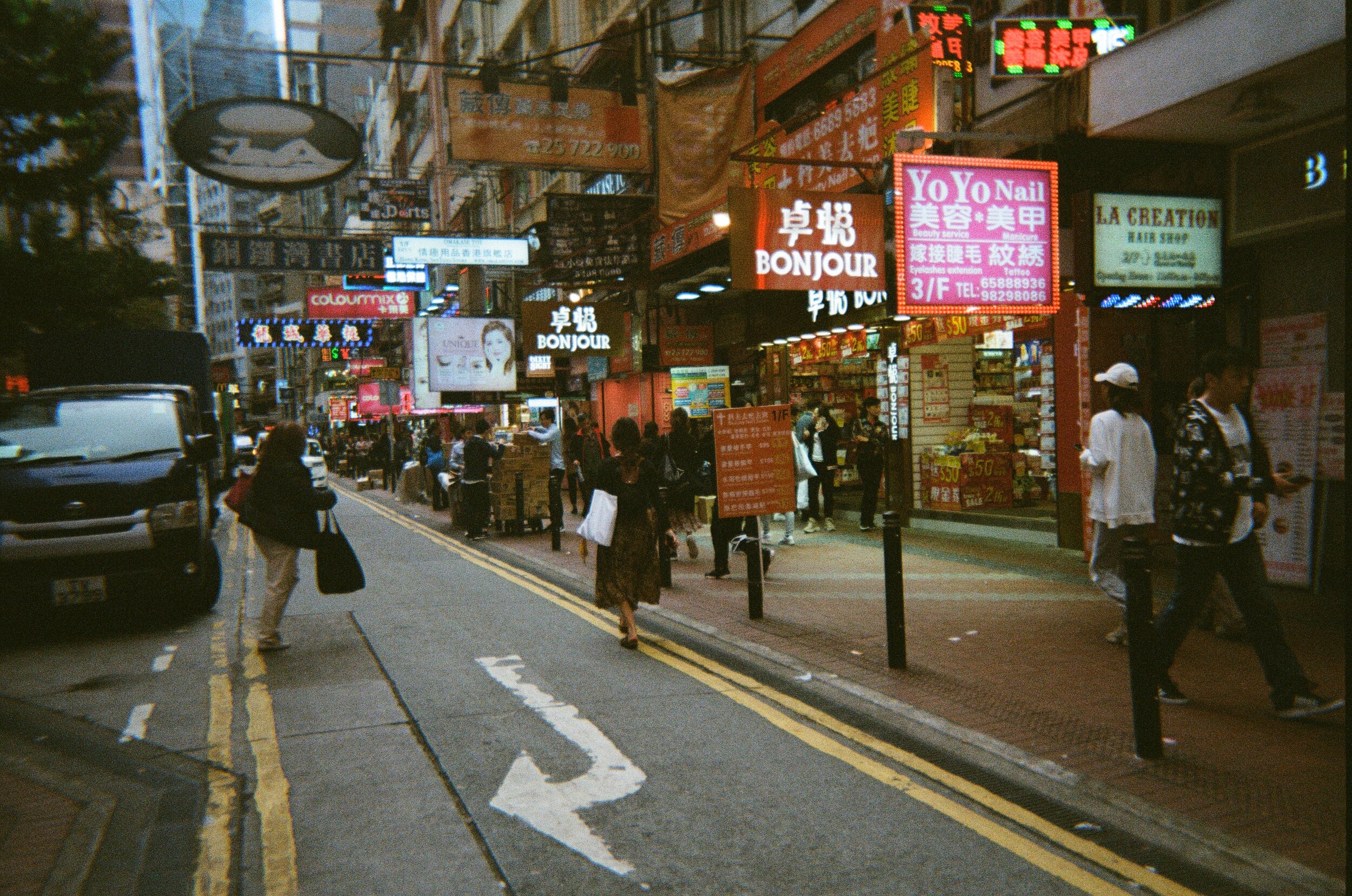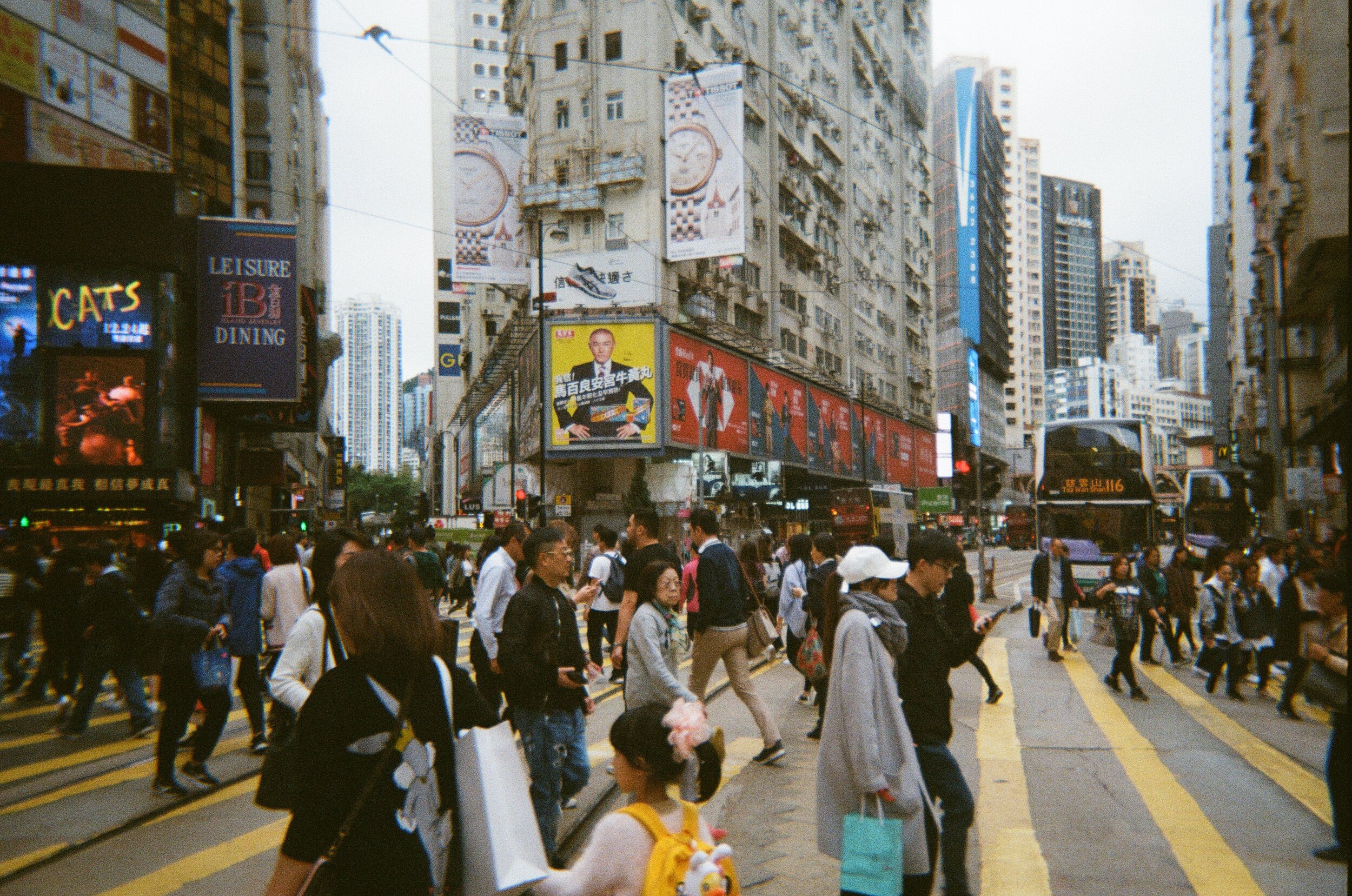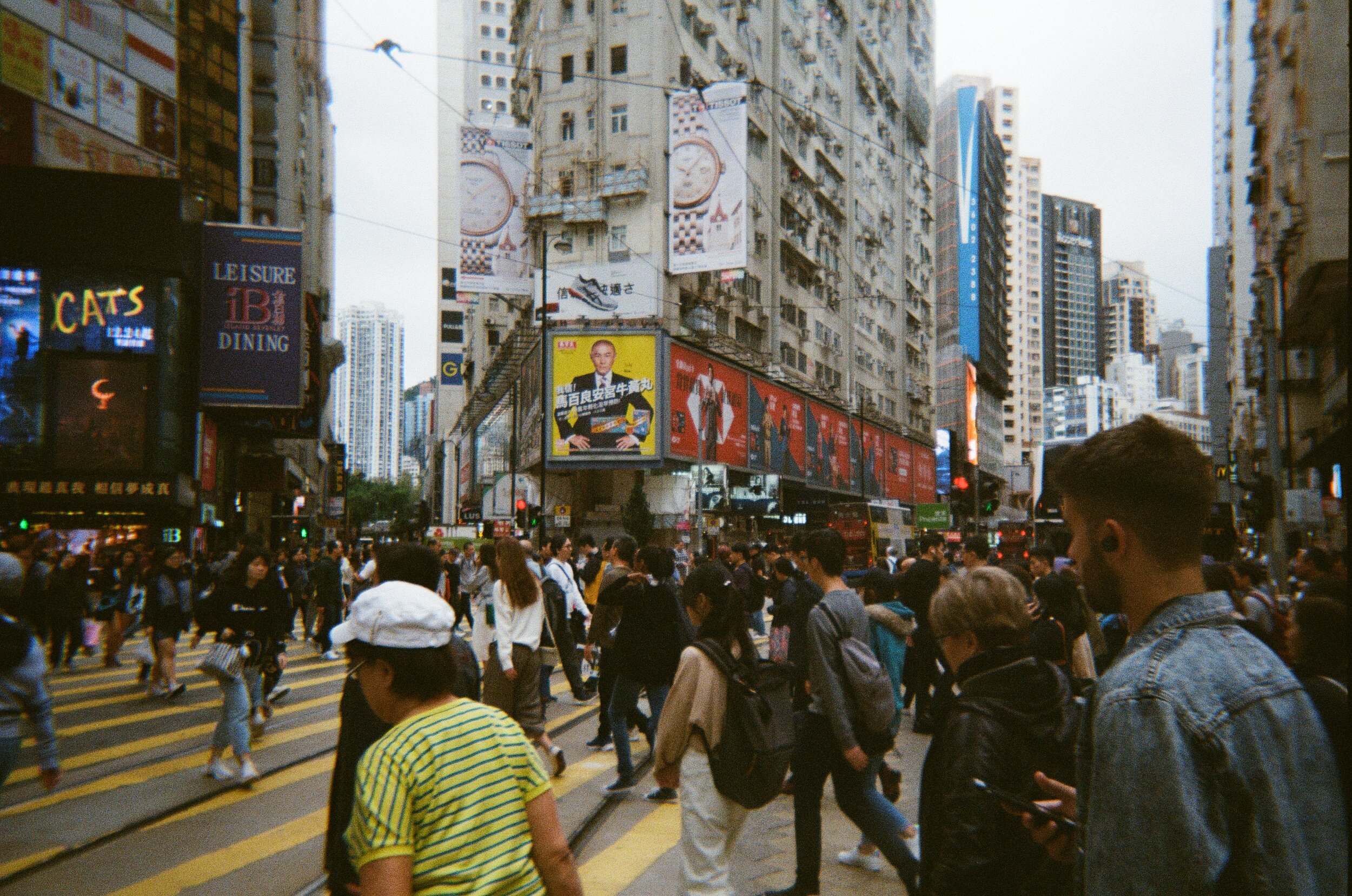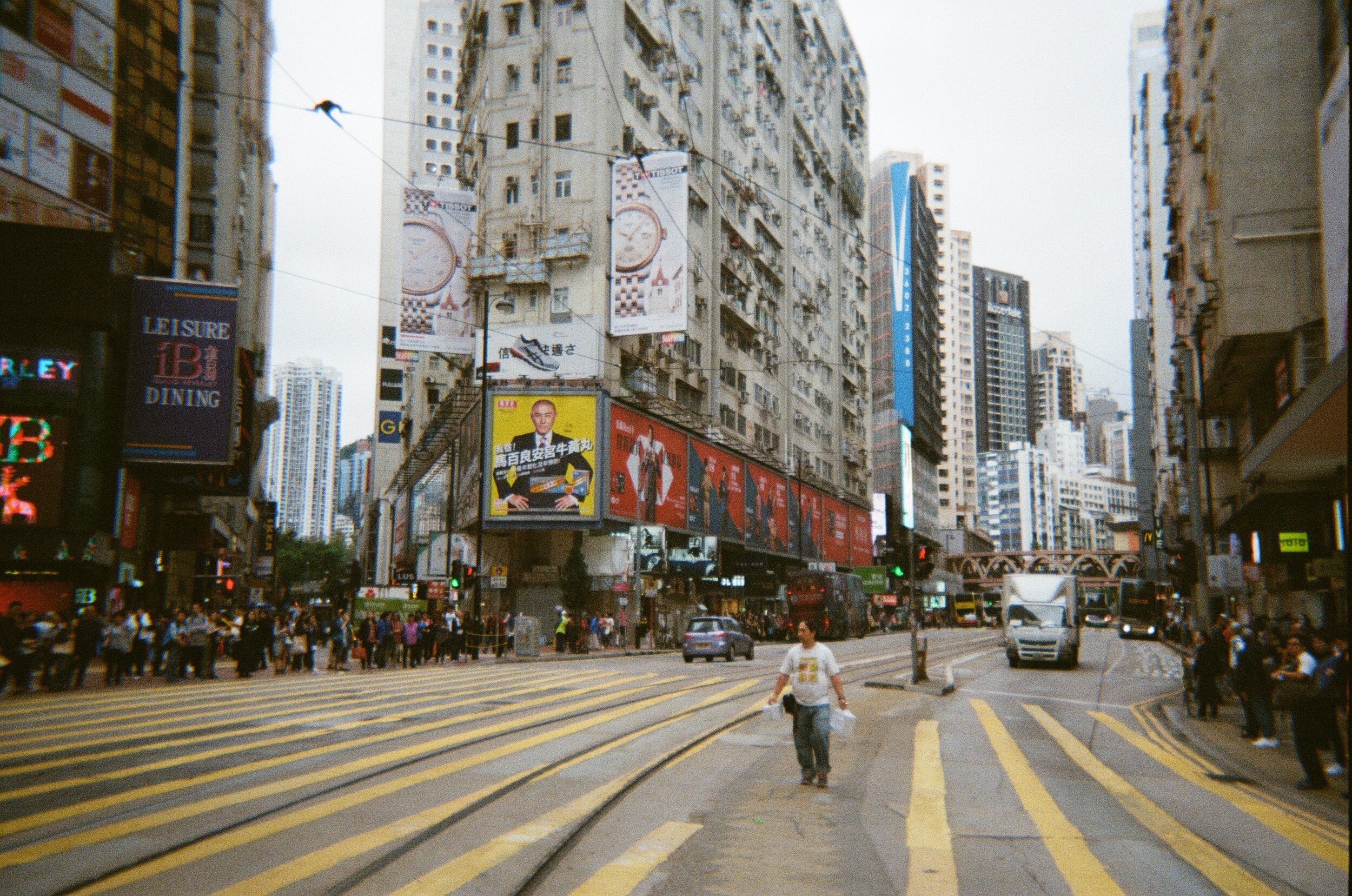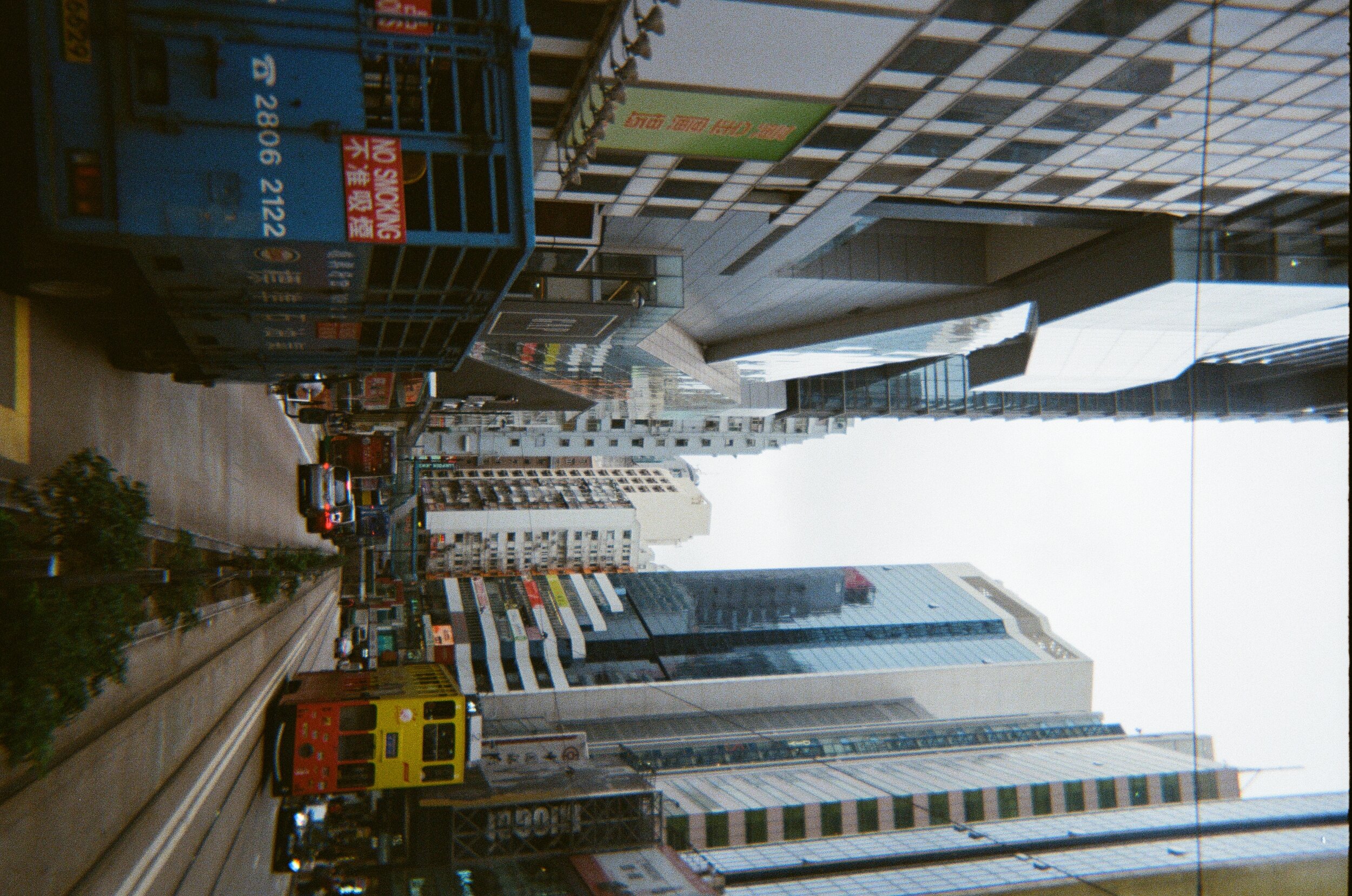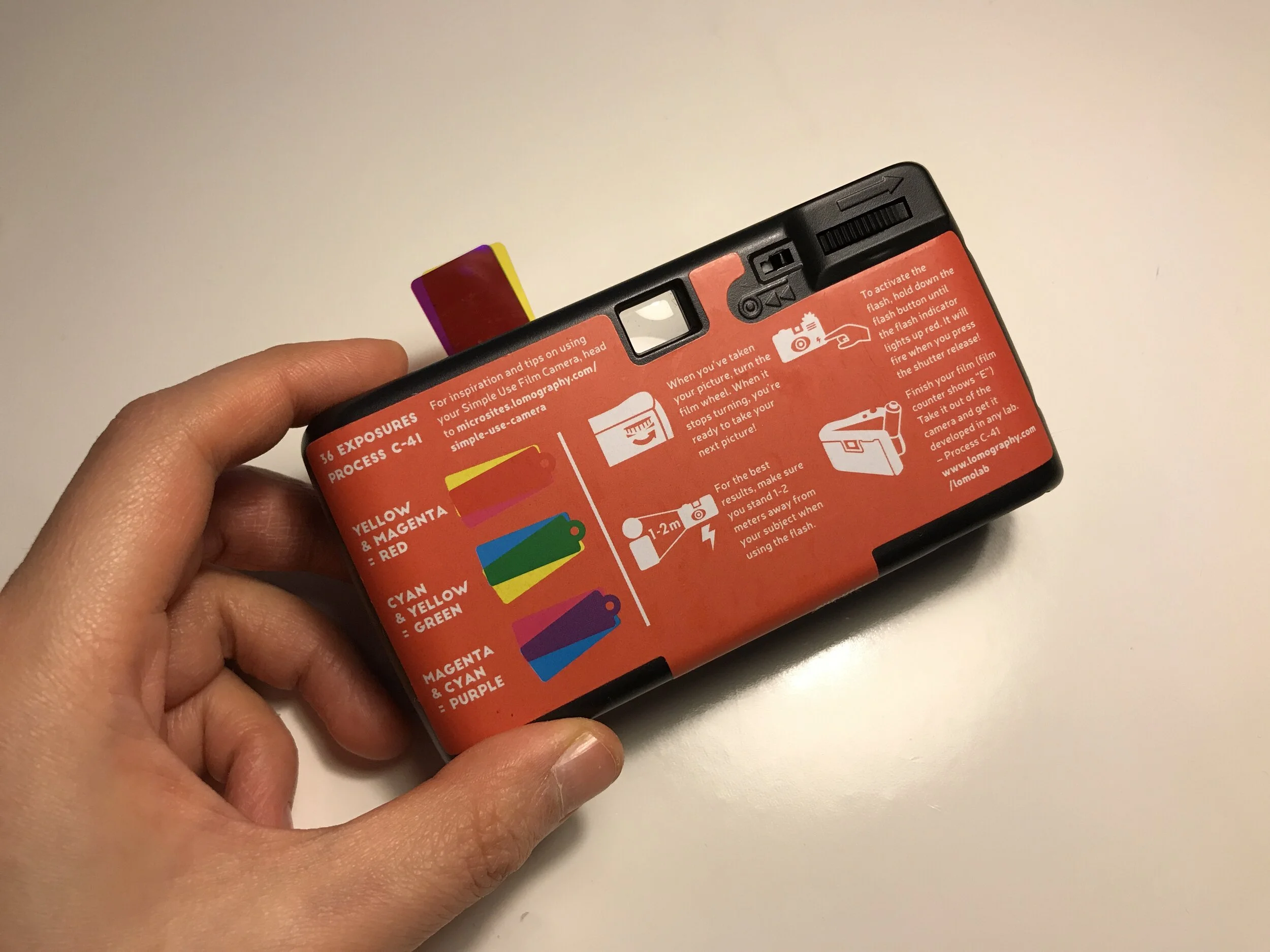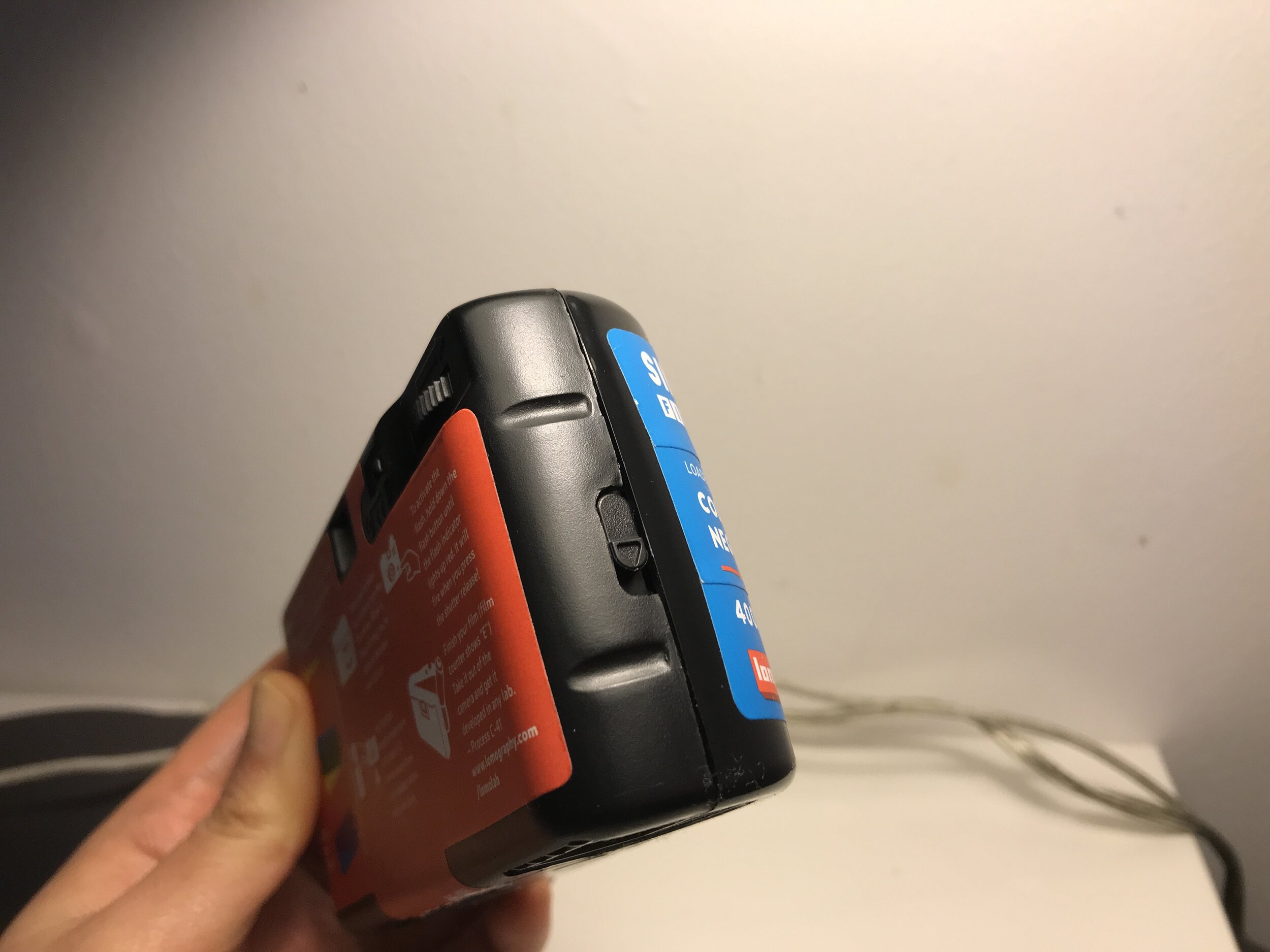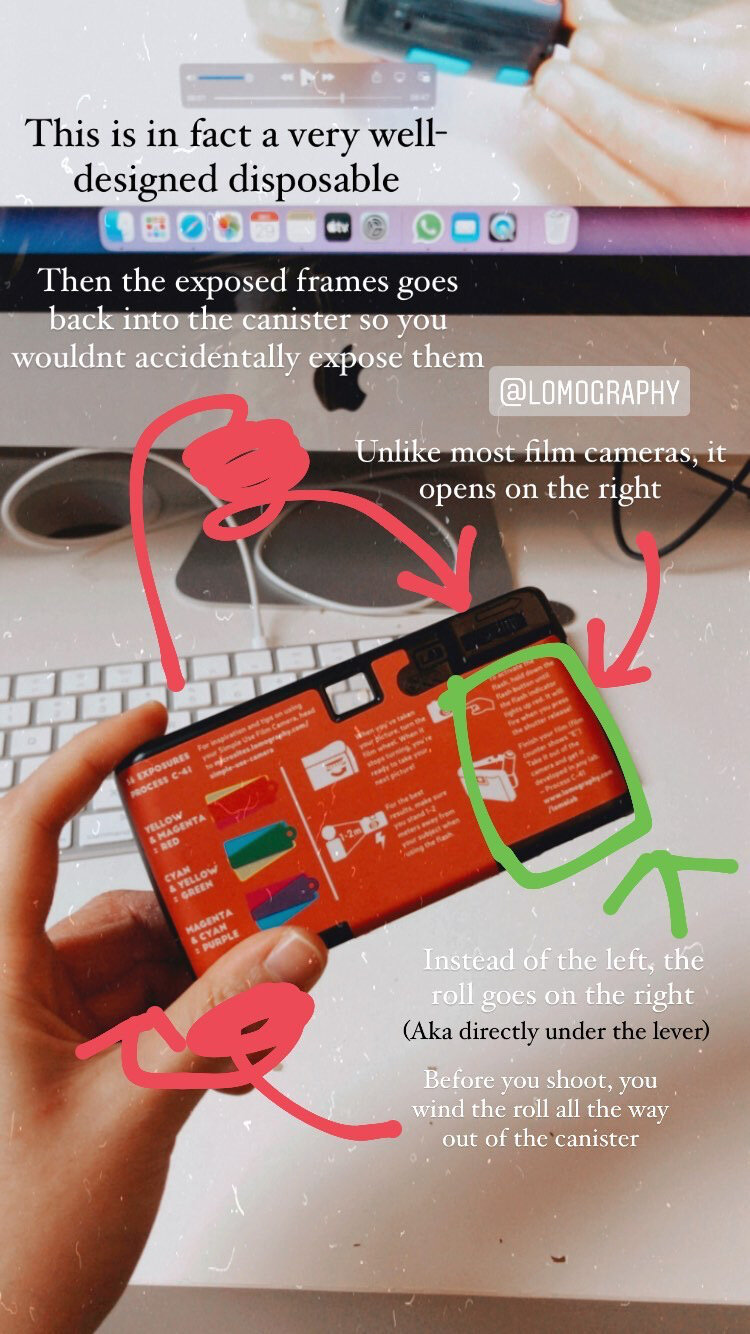This guide contains all essential information on using a disposable film camera. It covers basic information on its operation, camera settings and other common questions regarding more specific aspects of the disposable, the purpose of shooting on a disposable, and example of images taken using a disposable for your reference.
This FAQ guide is prepared based on the most popular disposable cameras currently on the market, including the Kodak FunSaver 35mm Single Use Camera, the Fujifilm QuickSnap Flash 400 Disposable 35mm Camera, the Ilford HP5 Plus Disposable Camera, and the Lomography Simple Use Reloadable Camera Color Negative 400, which is the one I personally own. Check out their latest prices on Amazon via the links.
For more general questions in relation to film photography concerning other types of film cameras as well, here is another earlier article taking a similar format: [Pho.Talk] Ultimate Film Photography Troubleshoot Guide: Storage Time, Accidents & Hacks.
If you find this helpful, SUBSCRIBE to my channel via the box on the left to make the most out of my blog! Also, do share it with people who might be interested. Shoot me an email/ DM to share your thoughts too.
Also, Pin this article to your Film Photography/ Photography Inspiration boards in Pinterest if you find it helpful!
How do Disposable Cameras Work (without exposure and focus control)?
Go ahead if you enjoy a written guide packed with more technical details, whereas if you want a starter pack with visual demonstration, here is a video overview of disposable film cameras.
What are the camera settings: Shutter Speed, Aperture and Focal Length?
Most disposable cameras have a shutter speed of around 1/100s, aperture of f/10 and lenses of focal length 30mm. These are the average figures across brands including Ilford, Kodak, Fuji and Lomography.
Specifically, taking the Lomography colour negative simple-use disposable camera as an example, the exact settings are 1/120s (shutter speed), f/9.0 (aperture) and 31mm (lens focal length). The optimal focal plane is 1-2m from the camera. This is available information on the official Lomography website, also confirmed by member of staff running their official Instagram account.
Here is another example. The Fuji QuickSnap has a shutter speed of 1/140s, aperture of f/10.0 and lens focal length of 32mm. The subject to lens distance is 1m to infinity. This is also publicly available on the Fuji official site.
How do disposable film cameras focus?
The focusing range on disposable film cameras are mostly fixed. It is rather the photographer’s job to position himself at the required distance so as to capture the intended subject in focus.
The idea behind the disposable camera’s focusing system is similar to that of zone focusing, in which the camera settings are optimised to enable everything within a certain range of distances to be reasonably in focus.
The focus on disposable cameras cannot be expected to be of impressive sharpness, but most things, at most distances will be acceptably sharp.
This is largely due to the small apertures, which greatly expands the depth of field to cover many everyday scenarios.
In other words, the focusing is not done in camera, but by foot by the photographer. Taking the Lomography colour negative disposable as an example again, it recommends that users take photos between 1-2m from the subject. It means the Lomography has designed the camera to provide optimal sharpness of subjects shot within that range of distances.
To work within the restrictions of a simple-use camera, the photographer keeps that in mind and shoots 1-2m from his subjects to get sharp images.
How much does it cost to develop a disposable camera?
It is the roll of film inside the disposable camera that determines the price, which is usually a colour negative 35mm film. The cost would range typically between £4-$15 if you take it to a film photo lab, and would cost on average $2 if you develop it yourself at home. When you take the disposable camera to develop, it is the film inside that gets developed, not the plastic exterior. The camera itself is removed before developing the film inside and might be reused at your own risk.
Here is a compilation of the fees for 35mm colour negative (C-41) at relatively inexpensive photo processing labs in London, United Kingdom for your reference. Prices listed include both developing and standard scanning, as at Jan 2021. To check out their official price lists, follow the hyperlinks as attached.
Analogue Films: £3.99
Aperture Photographic: £11.00 (price unlisted, but based on previous experience. You will need to get in contact with them for the exact price)
Kodak Express: £15.00
Artful Dodgers: £15.00
The fact that the film is from a disposable camera makes no difference to the cost of developing the film itself.
Here is a more detailed piece ‘[Pho.Snap] FULL GUIDE on Developing Film with a Lab’ in which I explained how to choose the best film lab to develop film with. Everyone has different needs, and this acts as a guide that tells you what to think about in making your decision.
Can you develop disposable cameras yourself?
Yes, you can develop the film inside your disposable camera by getting the right chemicals and equipment for that type of film. You will first have to open the plastic camera box and take out the exposed roll of film. With the equipment of your choice, you will then load the film into a light-proof container, into which the chemicals will go to develop the negative. Following the development times and temperature instructions, the images in your negatives will be set and taken out for drying.
Lastly, with the preferred method of scanning or digitising the negatives, the negatives can be transformed into digital files for viewing and editing on computer softwares.
The strongest case for developing films from disposable cameras is to save costs. At home development is mainly for those who expect themselves to be constantly shooting film, and specifically in the case of disposables, regularly shooting film in casual, informal occasions.
As we see from above, it really adds up to send your films to be developed in a lab. Disposable cameras are typically used for capturing intimate, personal memories.
If that is the case for you, investing in a home development kit is probably a more financially sensible alternative for you.
What is the point of a disposable camera?
Disposable cameras are designed for capturing instant, fleeting moments in our everyday lives, situations in which more complex gear would have been out of place. It is also fit for relatively chaotic life events like parties, which is too risky for expensive gear to be carried around, yet too important at the same time to go un-photographed. The point is not about producing technically flawless images; rather, it is about focusing on preserving genuine, photo-worthy moments.
Specifically, if the scene involves people, it can be distracting to frequently pull up a bulky, sophisticated-looking camera, especially among friends and family who are not photographers/ artists.
We photographers understand completely the point of documenting interesting fragments in life, but that is not what the majority of people think about. it can therefore be awkward in a social situation that other people perceive as ‘everyday’ and ‘ordinary’, although these are clearly moments photographers would treasure.
With a disposable camera, which is likely perceived to be more playful than ‘pro’ in the eyes of people in general, you would cause less destruction to the scene. People would be less likely to mind you taking photos, or even not notice you holding up the camera at all.
This brings you a long way in capturing authentic moments between you and your loved ones.
Personally, I have brought my disposable cameras to shoot rather intimate details in my personal life, shared with the select few important people in my life. They are not photographers and probably would not be comfortable in front of my other SLRs.
Being a photographer is not about blindly chasing technical quality of images, which, while being a legit goal to work on, always comes after building relationships and trust which would eventually lead to story-worthy images, regardless of the choice of gear used.
Do disposable cameras take good pictures?
No, if ‘good’ is understood in a technical sense. The lenses on disposables are usually plastic, which greatly limits the sharpness of the photos as a result. Photos from disposables also typically has heavy vignetting and edge blur, which may not be the aesthetic for everyone.
However, photos taken using disposables can be ‘good’ in the sense that it allows users to document candid, passing moments that might otherwise have been interrupted had more sophisticated gear been used.
Because of its toy-camera outlook, disposables typically causes less distress and pretence in the people being photographed. The rudimentary look of these photos can also be seen as a way of conveying the mood of private, mundane moments in a photographer’s life.
The burden falls on the photographer to get the best out of the technical limitations that come with a disposable camera, one of the most determining factors is the choice of film. Read this guide on ‘[Pho.Talk] How to Choose your 35mm Film (ISO + Brand)’ to understand how to get the most out of your disposable by using it with the right film.
As I have shared in my Youtube video [Film Photography] IS IT WORTH IT? non-emotional reasons why I shoot film & costs of shooting film, here are some examples of my shots from the Lomography colour negative simple-use camera.
How many times can a disposable camera be used?
Technically, there is no limit as to how many times a disposable camera can be re-used. Where well-kept, disposable cameras can be repeatedly re-used until the hardware malfunctions. Just like any other automatic camera, it is powered by batteries and the rest is hardware. The disposable can be reloaded by opening the plastic box, taking out the completed roll of film and inserting a fresh roll. This is a largely mechanical process and therefore can theoretically go on indefinitely. The battery runs out with use, which needs to be replenished for the disposable camera to be re-used. As long as the circuits are still properly connected, and that the camera is still intact, it will continue to take photos.
Personally, I have had my Lomography simple-use colour negative disposable camera for slightly over a year at the point of writing this article, and have reloaded the film stock inside for at least 5 times. I have had to change the battery once, which is an AA-sized battery, and am still taking pictures using the disposable.
How to transfer pictures from a disposable camera to a phone?
The film will first need to be developed using a suitable chemistry to give a final negative. Then, the negative will need to be digitised or scanned to give digital files, for the images to be viewed or stored in phones or other devices. Having been transformed into a digital file, the image can be freely used and transferred like any other digital file. There is no direct way to extract pictures from a disposable camera and view it digitally, because film photography is largely chemical in nature. The image is generated only after the film goes through the chemical process.
Usually, people bring their completed film rolls to their local photo processing lab, which will take care of the chemical process for you. They also provide the option of doing the scanning for you as well, some coming in as a ‘dev+scan’ package, others provided in form of an additional service. Most people would opt for having their images sent to them via email or We/Transfer, and then download the images onto their preferred device, be it a phone or computer.
How do you store disposable cameras?
On a general note, film is best stored under cool conditions. However, no special treatment is required before the expiation date. For the film stock inside the disposable camera, it would be safe to store it under room conditions, same applies to the camera, which is usually made of plastic. However, if the expiry date of the film stock is approaching or has passed, the film is best preserved by storing it in the cold. To minimise hazards, place the disposable camera inside an air-tight bag before putting it into the fridge. The purpose of wrapping it in a bag is to minimise the effects of the potential hazards caused by storing batteries and electronic parts in cold, humid environment of the fridge. That said, it is therefore not recommended to store disposable cameras in the fridge. The best way is to simply shoot the roll in the disposable camera before it expires.
The critical part lies in storing the film, less so about the camera, because the film does decay with time, at varying rates depending on the temperature and humidity.
The camera on the other hand, which is basically a plastic shell, doesn’t require much care in its storage. However, it would be too much a hassle to separately cold-store the film inside by opening the camera and taking the film out, especially when disposable cameras are designed to be an instant, light-hearted way of taking photos.
Relative to the risks of storing the disposable camera in your fridge, it might be wiser to just shoot the roll, because photos from disposables are not meant to be technically flawless and deliberate.
Do Disposable Cameras count up or down?
Most disposable cameras count down. When freshly loaded, the film counter reads the maximum frame number and as you shoot and advance the film, the film counter reading goes down until it displays ‘E’, or ‘0’, depending on the brand of the disposable. The way the film is advanced in disposable cameras are usually different from that in other 35mm film cameras. The film is first winded all the way out of the canister, and then back inside as the frames get exposed. Therefore, as the frame counter rotates with each frame pulled back into the canister, the number on the frame counter decreases.
Can you open a disposable film camera and take the film out?
Yes, you can open a disposable film camera after completing the roll inside, take it out, reload a new roll of film and re-use the disposable camera. Disposables typically have a button on the side, which you can push to release the back cover. Flip the cover over, and your roll of film can be taken out from the compartment it’s placed in. The specific positions vary between models designed by various camera manufacturers.
Here is how. Let’s take the example of a disposable film camera I own, the Lomography color negative simple-use camera. Here is what it looks from the back. When you open the camera, the back should be facing upwards, like so in this photo.
On the right side, there is a button that controls the opening of the back cover, as photographed as follows.
This is what it looks inside when the disposable is open. The dent on the right is where the film would have sat if you have just completed a roll of film. It is currently empty because I have taken my previous roll out but have yet to load another roll into it.
How do you know when a disposable camera is done?
There is a frame counter on the top of the disposable camera, right next to the film advancing wheel. The frame counter displays the number of unexposed frames left on the roll as you shoot and turn the wheel. When that counter gets to ‘E’ or ‘0’, or that the film cannot be advanced any further, it means that the available film has come to an end.
The film counter looks something like this, typically found on the same side as the film advancing wheel. Currently, my disposable camera is on frame 18 according to the frame count.
Can you open an unused disposable camera without destroying the film?
It is not recommended to open the film camera because disposable cameras come with a roll of film already properly loaded inside. This means that the film is meant to be shot readily the moment someone purchases the disposable. If the camera is opened at this point, the roll of film will immediately be exposed to light, resulting in empty frames. If for any reason you need to open an unused disposable camera, do it in the dark so that the film remains unexposed to light.
For your reference, this is how the Lomography colour negative disposable is designed, as I have explained in my Instagram story.
Depending on the brand of disposable camera you are using, some cameras have the film completely winded out of the canister, because these cameras are targeted at the general public, most of whom do not have the know-how to load film into cameras. This basically means the entire roll of film is actually winded out of the canister to start with, and then winded back into the canister as the frames are being shot. Therefore, with all the film unprotected by the canister when the disposable is completely unused, opening the camera will inevitably result in unwanted exposure, destroying a rather large portion of the film.
Summary
In this article, we talked about:
How does a disposable film camera work, specifically in relation to the camera settings and lens focus;
How much does it cost to develop the film in a disposable;
If you can develop film in a disposable camera at home;
What is the point of shooting on a disposable camera;
If you can take good pictures using a disposable;
How many times can disposable cameras be used;
How to transfer images on a disposable camera onto a phone;
How to store disposable cameras, and others.
More sharing coming soon!
SUBSCRIBE via the box on the left for more PRO tips, and follow me on Instagram (@_bjiao__) and let me know what you think in the comments!
Share this article on Pinterest too!
Keep shooting, keep creating!
The mission of this blog is to provide the best insider information in the photography industry, as openly as possible. You have direct access to my
first-person experience as an aspiring photographer who talks, but also works.
Honest opinion are rarely available as public resources because this is a competitive industry. Huge sums are made when such information is delivered in the form of mentorship and workshops.
This blog is a great way in which I cover my daily expenses, but also provide real value.
If you have learnt something that would be worth at least $10, please consider donating to the page. This enables me to keep creating content and helping more people sustainably.
Your continued support for the blog is appreciated!

